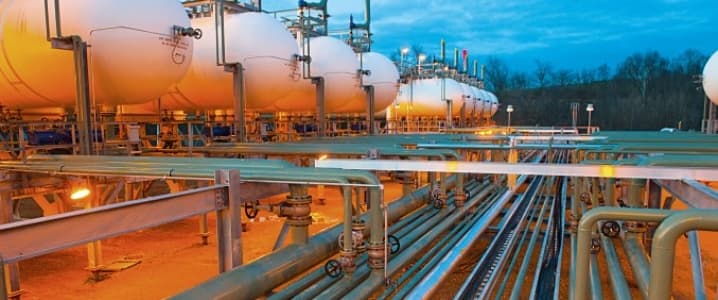It’s been a long time since my last post, which is primarily due to the fact that most of my free time over the summer was devoted to helping write a legal brief on whether the U.S. Federal Government, through the Bureau of Land Management (BLM), can impose reasonable regulations for fracking on federal lands.
As a result, I lost track of how many U.S. LNG cargos were exported over the summer and wanted to catch up on that important development with this post. As it turns out, it’s a good time to reflect since Cheniere Energy, currently the only U.S. LNG exporter shipping LNG from the lower-48 states, has a planned outage during the month of September to address flare performance.
The Department of Energy (DOE) tracks imports and exports of LNG and posts a monthly report that lags the market by about a month. The U.S. DOE just posted an update on September 16, 2016, which shows all LNG exports from Cheniere’s Sabine Pass Liquefaction facility through July 2016.
(Click to enlarge)
As you can see, U.S. LNG has found its way across the world and ended up in some unexpected places, such as the UAE, Jordan and Kuwait. Although the Middle East region as whole holds much of the world’s proven natural gas reserves, the reserves are not evenly distributed. This results in an abundance of gas in some countries (such as Qatar, currently the world’s largest LNG producer with 77MTPA of production capacity), but a shortage of natural gas in other Middle Eastern countries.
Cheniere’s first commissioning cargo in February 2016 to Brazil was also somewhat unexpected since the rumor at the time was that the cargo would likely go to Lithuania. Folks at Cheniere advised me that the first few cargoes were “hot,” meaning they had a high ethane content and only certain import terminals could take them.
Notably absent from the list of export destinations is Asia, which was the intended target when Cheniere first proposed exports. As an example, back in March 2013, spot LNG prices in Japan were almost $20/MMBtu, making Japan and other Asian countries a prime target for U.S. LNG exporters hoping to capitalize on the price spreads between $3.00 Henry Hub and oil-indexed Asian LNG.
Fast forward to today with the price of LNG plummeting due to the collapse in oil prices coupled with a supply overhang from new LNG coming online from Australia and the United States. Although U.S. LNG exports will ultimately go to the highest paying market, based on the map below, the highest paying market looks nothing like it did just a few years ago!

At the moment, the market offering the best returns on a netback basis is South America. ICIS published a great article about this last week and I encourage you to check out the interactive graph they posted with the article. According to ICIS data, 26 cargoes (as of Sept. 6) have been delivered from Cheniere’s Sabine Pass with more than 57 percent of total exports going to South America. Chile is the single biggest recipient and absorbed 28 percent of the total volume. Related: The Presidential Debate: Clashing On Energy
Cargos to Chile are likely to increase over time with Cheniere noting in a recent presentation that it is participating in the development of a Chilean LNG to power solution and also plans to pursue similar LNG to power projects to stimulate new demand.
(Click to enlarge)
A recent development that should help U.S. LNG exporters going forward is the July 2016 opening of the expanded Panama Canal, which will accommodate 90 percent of the world’s LNG tankers. Only the Q-Flex and Q-Max ships will not be able to transit the expanded canal.
According to the U.S. EIA, the new locks will significantly reduce travel time and transportation costs for U.S. LNG shipments to key markets in Asia. For example, the voyage to Japan will be cut from 34 days via the southern tip of Africa (or 31 days via the Suez Canal) to 20 days. Exports from the U.S. Gulf Coast to South America will also be shortened from 20 days to 8-9 days to Chilean regasification terminals, and from 25 days to 5 days to prospective terminals in Colombia and Ecuador. The Panama Canal Authority also approved a new tolling structure for LNG carriers in 2015 with tolls based on cubic meters. Related: Oil Spikes After OPEC Reaches Deal On Output Cap
On July 25, 2016, the first LNG carrier transited the expanded canal with a cargo from Cheniere headed to China aboard Shell’s Maran Gas Apollonia.
While it remains to be seen where the bulk of U.S. LNG will eventually end up, one positive development for the LNG industry as a whole is that today’s low prices are bringing out many new LNG buyers with a growing number of countries now considering LNG imports.
ADVERTISEMENT
(Click to enlarge)
While Cheniere is currently the only U.S. LNG exporter shipping LNG from the lower-48 states, as shown on the following map from FERC, four more U.S. LNG export projects are under construction and more have been approved.
(Click to enlarge)
By the end of 2016, Cheniere’s Sabine Pass Trains 1 & 2 will be in operation. By 2017, another three trains from Cheniere and Dominion’s Cove Point Maryland terminal are expected to start up. By the end of 2018, five new trains could come online from Cameron, Freeport and Corpus Christi. Another four new trains are due online in 2019 from Freeport, Corpus Christi and Sabine Pass. In other words, U.S. LNG exports are only just beginning!
By Susan Sakmar
More Top Reads From Oilprice.com:
- The Inevitable Winners Of The OPEC Meeting
- EIA Reports Yet Another Big U.S. Crude Draw
- Saudi Arabia Is Indifferent To A Short Term Solution At Algiers






















